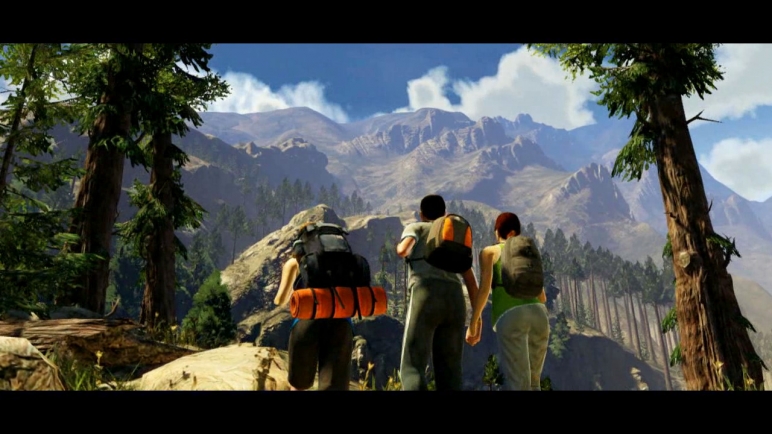 In order to sell games to the widest audience range possible, in many cases, gaming products (eg. consoles) have to be changed due to issues and legal requirements in some countries. China is one of the most well known examples of gaming product adaptations from the ban that was set in place in 2000, as the Chinese government deemed games consoles to "corrupt the mind of the teenage generation". This seems quite hypocritical and ironic when you consider that the Wii, the PS3 and the Xbox 360, the three major leading gaming consoles out there now, are Chinese made and there is a flourishing PC gaming culture. However, in recent years Plug'n'play consoles became a legal alternative to the banned home consoles. The Chinese government approved games that didn't exactly look like a console but could hold multiple games, characters and products, thus the the iQue Player released by Nintendo was available for sale at $60 (US). The iQue Player holds specifically ported games such as Nintendo 64 and any new games have to be downloaded on to a memory card at a local game retailer that slot into the controller which encases the console. Also alternative models of the PS3 have been approved by the 'China Quality Certification Centre'. This shows that the console itself had to be modified in production to enable it to be available to the consumers of China, which is one example of a localisation technique.
In order to sell games to the widest audience range possible, in many cases, gaming products (eg. consoles) have to be changed due to issues and legal requirements in some countries. China is one of the most well known examples of gaming product adaptations from the ban that was set in place in 2000, as the Chinese government deemed games consoles to "corrupt the mind of the teenage generation". This seems quite hypocritical and ironic when you consider that the Wii, the PS3 and the Xbox 360, the three major leading gaming consoles out there now, are Chinese made and there is a flourishing PC gaming culture. However, in recent years Plug'n'play consoles became a legal alternative to the banned home consoles. The Chinese government approved games that didn't exactly look like a console but could hold multiple games, characters and products, thus the the iQue Player released by Nintendo was available for sale at $60 (US). The iQue Player holds specifically ported games such as Nintendo 64 and any new games have to be downloaded on to a memory card at a local game retailer that slot into the controller which encases the console. Also alternative models of the PS3 have been approved by the 'China Quality Certification Centre'. This shows that the console itself had to be modified in production to enable it to be available to the consumers of China, which is one example of a localisation technique.Alterations to the console isn't always the case or main concern and doesn't have to take place. The games themselves are more likely to be "localised" to fit certain cultural niches. To maximise sales as much as possible worldwide localisation takes place through different areas such as; graphic capabilities, local differences, language, cultures, software/hardware and music within the games. A strong example of how localisation can be an issue is that it takes a lot of time, which can prevent publishers from announcing one worldwide release date and then in turn impact on profits. A thing to consider would be the huge array of voice actors that make an appearance in GTA V and finding for example Japanese alternative voice actors that would be required to translate the vocabulary efficiently for local appeal and the length of time it would take to do this. Also in 1997, after it's Japanese release, Final Fantasy VII only reached the US 7 months after this and a further 2 months until it was on sale in the UK and Europe. Full translation and adaptations to the game expanded the time and prevented a worldwide release date due to localisation issues.
Cultural laws play a huge role in game sales internationally as a lot of countries have obvious restrictions on what is appropriate and acceptable for the people of their national audience. Due to WW2, any reference to the swastika is against the law, and that goes for game content aswell. On the release of Call of Duty: Black Ops in 2010 which contained zombies displaying swastika symbols, it immediately became highly offensive and caused an uproar with parents and so were removed from the German localised version of the game, showing that not only language is a barrier to cross when publishing a game. Also an example of a cultural change in a game stemmed from Chinese culture where bones are inappropriate to use and for this reason, the skeletons in the "Wizard 101" Chinese version were removed.
In conclusion, although I believe it is a necessity for games to be localised as national audiences still need to understand the game to play it from a linguistic point of view, some issues such as offensive content may not be able to be controlled easily. In other words, if games focused all their attention on localising every aspect of every game, how long would it take to cater nationally for all audiences individually without any offensive references whatsoever. The release times would be a huge problem and can we really eradicate all components of a game just in case they may be offensive?? what would be left?? However it is still a very important issue that needs to seriously be considered as one small factor could result in a whole audience being offended and not buying the game or any of the sequels in the future, reducing sales and profits.












